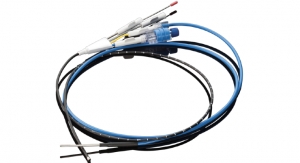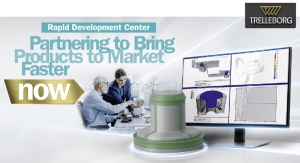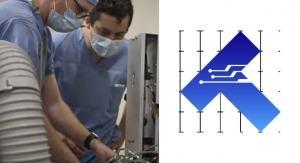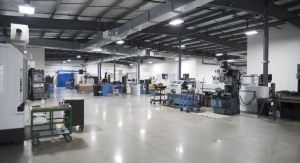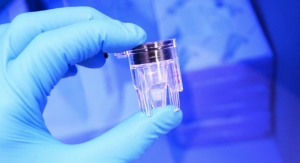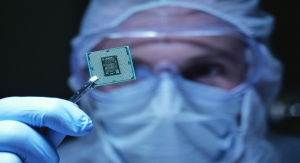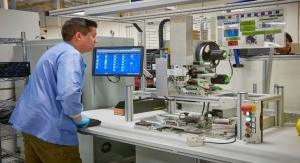Where Devices Come Together
Assembly operations continue to evolve toward automation.
Assembly, you might say, is where medical devices come together. Beyond being the step in the process where most devices take shape, it also is a critical part of the manufacturing process because—perhaps more so than many other steps—it impacts production costs, speed to market and quality.
Medical device makers and the U.S. Food and Drug Administration (FDA) are requiring more validation of the assembly process. OEMs also are pushing for faster production and lower costs. To stay competitive, contract manufacturers and suppliers must provide the assembly options that OEMs require, within an acceptable price range, or face losing business.
Although manual assembly and semi-automated assembly still have their niches within the medical industry (bonding luer fittings to tubing, for example), automated assembly increasingly is becoming popular because it speeds production, improves quality, lowers costs and makes it easier to validate the assembly process—which can result in faster approvals fromthe FDA.
As a vendor, being able to provide automated assembly is extremely important for remaining a supplier of choice in this increasingly competitive global environment—especially as OEMs are shortening their supply chains. Automation technology also is advancing at a rapid pace, creating more opportunities to apply customized automated assembly across a wider range of products, including high-demand complex devices as well as low-volume assemblies.
“These technological advances increasingly tilt the manual/automatic assembly decision toward automation for many manufacturers,” said Kenneth Lisk, president of Lacey Manufacturing, a division of Precision Engineered Products, LLC, a contract medical device manufacturer based in Bridgeport, Conn.
Tom Moore, technical sales manager for Leesburg, Va.-based Raumedic Inc., a single-source provider and manufacturer of polymer components and systems for the medical device and pharmaceutical industries, noted that customers want automated processes because they are easier to validate.
“We have definitely seen a distinct shift in the market toward automation and the ability to provide customers with automated assembly options,” Moore said. “This is of great importance to OEMs as they complete verification testing for their devices because it makes it easier to confirm they were assembled using validated processes.”
OEMs Seek More Value
The bar for ensuring that all processes are producing consistently conforming product is raised every year for all methods of manufacturing assembly. As a result, validation protocols increasingly are becoming robust.
“This situation makes automation a stronger competitor to manual assembly, because it eliminates human error and improves precision and mistake-proofing,” said Lisk.
OEMs are asking suppliers to take more responsibility for the complete development of the product—includingdevice design, manufacturing, assembly, automation, packaging and final sterile product supply. OEMs prefer to partner with companies that have the ability to offer multiple manufacturing capabilities (including assembly options) that result in a turnkey operation; this allows them to reduce their supplier base and internal fabrication costs, while improving quality and process validation.
In fact, some OEMs become directlyinvolved in the validation of assembly procedures by collaborating with their manufacturing partners to define the validation protocols. According to Moore, while contract manufacturers may have their own set of validation protocols in place, many OEMs have additional requirements that need to be included at the validation stage.
To support these collaborations, manufacturers provide additional automation design engineering, PLC (programmable logic controller) programming and electronic engineering support to design and integrate the validation protocols.
“This allows us to advance the project more quickly and influence the design process early on so the products are more compatible with our automated assembly procedures,” said Carl Martin, CEO for Advanced Scientifics LLC, a Millersburg, Pa.-based manufacturer of disposables for the healthcare and life-sciences markets.
The ultimate result of these collaborations is higher quality standards that result in more robust and repeatable assembly modules.
“We are often challenged with more stringent quality requirements with each new project,” said Moore.
“Frequently each critical dimension, for example, must meet a process capability index (cpk) of 1.33 and each non-critical dimension must reach a cpk of 1. Because of these types of stringent requirements, both OEMs and manufacturers are recognizing that automation is the best way to consistently achieve these tolerances and validate the assembly process.”
Advanced Assembly Technologies
Improvements in automation include faster speeds, tighter tolerances, and the ability to self-assess performance.
“Although robotics has become more intuitive and easier to use with lower labor knowledge,” said Martin, “when used in a full-automation format, or an FDA-oversighted application, robots require vision inspection controls, which add additional expense to the automation process.”
Camera technology and associated lighting, as well as information processing speed and automation control software, also are advancing at a rapid pace.
“It is crucial to be able to ‘see’ and process a tremendous amount of information to assure the automation is functioning correctly,” said Lisk. “Cameras integrated into the automation equipment can quickly and accurately determine product quality—in real time or near real-time.”
Depending on OEM requirements and the complexity of the product design and assembly process, 100 percent camera control to provide in-line measurements and other data points may be required. The expense of installing camera controls typically can be justified by a reduction in offline quality assurance (QA) measurement analysis, higher quality and process improvements.
Advances in real-time networked communications are enhancing automation feedback for internal equipment, as well as specific-customer-developed automation. This improves quality oversight and adds value for the customer.
“This capability gives us the opportunity to serialize each device lot number, with all automation parameters utilized for each specific device stored in the network,” said Martin. “Examples of some of these parameters are test results, time and temperatures to sealing processes, pressures used, amperages and any other controlled parameters that could have quality ramifications. Imagine the FDA perspective when you can show this level of information—the exact product details, well beyond the validated manufacture window.”
Automation capabilities continue to expand, including assembly modules forflaring and tip forming micro-tubing, automated assembly of extruded and molded parts and automated assembly of multiple injection-molded components. Products with multiple molded components and/or multiple extruded components, such as catheters and tubing, can be assembled via automated modules that incorporate camera controls to measure critical product criteria and dimensions.
For products containing different materials that are molded together via multi-shot molding or overmolding techniques, it’s essential these materials do not contain short shots or air gaps and maintain a strong adhesion between the two material layers.
“This is difficult to validate during an automated process,” said Moore. “There is, however, special sensor technology that can be installed within the automated assembly module that can verify this measurement.”
Technologies such as insert molding and multi-component molding also improve product functionality by combining the properties of multiple polymers (both hard and soft). These manufacturing processes provide cost savings because the assembly steps that were previously required to mate these materials no longer are needed (for example, catheter coupling for local anesthesia).
“We can also use these manufacturing techniques to reduce the number of individual parts and the assembly time of comparative products,” said Moore. “In using multi-component or insert molding techniques for complex products, we implement fully-automated systems under clean room conditions, where the assembled parts are produced with the highest quality standards and under 100-percent camera control.”
New technological advances that will probably have an impact on medical device assembly and automation in the near future include programmable magnets that enable precision alignment to any tolerance, as well as assisted assembly of product components. Heat is applied to demagnetize commercially available magnet materials, which are then reprogrammed with mixed–polarity geometric patterns of magnetic elements known as “maxels.”
The result is magnetic structures that relate to each other much more selectively than conventional magnets; the large number of possible combinations can be used to assist the assembly of components or even potentially produce self-assembling structures.
Programmable magnetic assembly likely will have a significant impact across all major industrial sectors, including medical devices, orthopedic implants, biomedical, aerospace and defense, automotive, electronics, energy, transportation, metallurgy, plastics and chemicals and consumer products.
“Manufacturing automation and mechanization is an obvious application for correlated magnetics,” said Larry Fullerton, CEO for Correlated Magnetics Research LLC in New Hope, Ala. “For example, correlated magnetic devices can substantially enhance the capabilities of traditional conveyer belts, minimize a robot’s reliance on sensors for positioning, significantly reduce costly errors in rapid pick-and-place operations prevalent in high-speed manufacturing and enable other benefits including reductions in system downtime, power usage and pollution.”
Using robots in pick-and-place applications especially can be challenging because they must be precisely positioned for thesystem to correctly pick and place objects. Even a misplacement of just a few millimeters can create missed picks and botched places, possibly shutting down the system. This downtime can be avoided by installing vision-capable, delta-style 6-axis robots that, when combined with a flexible conveyor system, create a rapid and efficient pick-and-place system that requires very little floor space. The machine-vision system continuously takes pictures of the product being transported along the conveyor, which often is backlit to increase the machine vision’s accuracy. As the product enters the work area the robot can accurately move to the product and either pick it or work on it while matching the current conveyor speed.
Vision-enabled robotic systems also can be used in assembly operations for inspecting or rejecting product, loading and unloading, validation and data acquisition, vision and line tracking and packing and wrapping.
“The use of machine vision and flexible conveyors to handle the assembly components further reduces the floor space required for the system, allowing a wide variety of manual assembly processes to be automated,” said Walt Langosch, director of sales and marketing for ESS Technologies Inc., a company in Blacksburg, Va., that specializes in integrated robotic systems and automated assembly systems for medical devices and test kits.
“Manufacturers in a range of industries are beginning to embrace machine vision; in fact, we have conceptualized and/or manufactured assembly systems for medical devices, diagnostic test kits, filter assembly and cap and wand sub-assemblies,” he said.
Outsourcing Assembly and Automation
By using technology that provides unique and creative solutions for assembly, suppliers have a real opportunity to convince OEMs not to outsource to low-cost countries, where quality is at greater risk.
“Automation is most compelling for those critical assembly processes where the use of human labor in low-cost countries may not have as consistent of an output in terms of reliability as compared to automation,” said Lisk. “One of the keys to using this strategy is having sound customer relationships in place that provide a level of assurance that the capital investments necessary for automation provide adequate returns, both in terms of quality and cost.”
Even so, the decision isn’t always easy to make.
“The key to the ‘automation versus overseas low-labor costs’ issue is being able to quantify that using a validated automated process is a lower-cost option than a non-validated low-cost process,” said Moore. “Identifying indirect costs associated with quality issues during the life of the product is critical for winning business with OEMs on the basis of automated assembly.”
Each OEM has a slightly different outlook when it comes to outsourcing. Some OEMs allow their suppliers to use low-cost assembly solutions that may involve outsourcing to another supplier. Others are very stringent when it comes to involving an additional assembly source. The one thing that is universal with OEMs is that they want to keep as many of the manufacturing steps in-house as possible, yet maintain cost competitiveness and quality. In-house assembly offers the supplier more control of the assembly process and may offer a more streamlined validation procedure with reduction within the requirements of a safety risk analysis or failure mode and effects analysis.
Companies such as Raumedic have the ability to offer customers both in-house assembly and outsourced assembly partners.
“We look at the assembly decision on a case-by-case basis,” Moore said. “Our goal is always to keep as much manufacturing as possible under the Raumedic roof and we look to automize our assembly techniques whenever possible. We do recognize that from an economical standpoint this doesn’t always make sense, but we work together with the OEM to develop the best solution.”
This often is the case for labor-intensive, low-volume assembly requirements, such as simple tubing fabrication/tubing sets.
“We can win this type of business through use of partnerships in low-cost countries,” said Moore. “We find partners that will not jeopardize our quality standing in the industry, which requires quite a bit of due diligence. Our partners are selected through extensive research and through technical audits so that we are fully confident in using these lower-cost assembly providers.”
Challenges Ahead
Keeping up with the rate of technology change can be a daunting challenge for medical device manufacturers. The development of more highly integrated advanced automation continues to require a higher level of training for personnel, including operation manual updates, increased operational details, enhanced troubleshooting, video recording of training sessions and even doubling the amount of training on the plant floor.
“While there is always a strong pull to have the small group of people responsible for automation integration working on a value-add project,” said Lisk, “it is also important to make conscious decisions to send this talent pool to learn about new emerging technologies that will help the company maintain a competitive edge in the marketplace.”
Making the decision to automate can be challenging—the main considerations are financial return, the criticality of the process under review for potential automation and contribution from the OEM. In some cases this is an easy decision because all drivers are present to justify the investment; in other situations a risk assessment and evaluation of associated “soft costs” associated with potential liability of product failure may be required.
Automation is not always the right choice: there still are areas for which manual or semi-automated assembly processes are a better fit. Typically the lower the production volumes and QA requirements, the more applicable the manual and semi-automation operations become. Automation only should be added when the production conditions make sense—such as high volume and quality requirements.
“Manufacturing companies typically invest in automation when it will pay for itself in one to five years, depending on company capital investment parameters or having a product that cannot be assembled manually for various reasons, such as too small a size or the need for higher-precision techniques,” said Martin.
Automation or automated assembly normally comes with “sticker shock” because up-front investment costs can be substantial.
“Automation equipment is usually customer specific and therefore involves up-front negotiation with the OEM regarding investment costs,” said Moore. “When a situation arises that involves the question of whether to automate or not, we must be able to bridge the gap between initial investment costs and the cost reductions that would be realized using automation (such as lower incoming inspection requirements, higher potential market share, reduction in internal fabrication costs and reduction in re-work.”
Once properly installed and implemented, automated assembly operations should improve the quality and consistency of the final product. The key is being sure the goals you expect to achieve with the automation are realistic and well defined.
“Build your technology around your defined goals and be extremely prudent in deriving a validation strategy that will assure the initial and ongoing expectations of the automation are met,” said Lisk. “Then it is important to address critical outputs that are not part of the automation by applying other types of appropriate controls.”
Because automation improves consistency and therefore quality, the best projects are those in which automation handles every stage of production, from assembly all the way through packaging. These also are the most expensive systems to develop because the system must be capable of identifying any possible out-of-spec product at any production stage.
“People are still the most economical way to inspect highly variable products, but they are not as consistent as an automated inspection system,” said Martin. “The automatic inspection system needs extensive validation at completion, or significant software revision and then simple testing at some set duration. A process where people are the inspection method still requires extensive validation ongoing to be as effective. Ultimately the FDA expects a controlled process. With today’s capability for network communications, we now have the capability to serialize every assembly with all machine variables—the ultimate process control.”
In most applications, even when there is an expectation for high-speed automation, Advanced Scientifics will develop a semi-automatic manual interface format for the product. This format does the same assembly process but with manual labor.
“This is a good format for working out design issues, quality concerns and any automation needs or issues,” said Martin. “During this process the customer can also make the labor vs. automation costing calculation. This is a great example of why it’s good to have the molding and automation vendors develop this together—the result is a process that takes less time, costs less money and delivers a better product.”
Finally, it is important to note that simply having automation will not guarantee higher quality. Suppliers that incorporate automation must have validation/qualification procedures in place that allow them to validate the automation process. If the process cannot be validated, the consistency or repeatability of the automated equipment is jeopardized. Manufacturing firms also need to have robust quality management systems in place to ensure the correct quality measures are met as automation equipment is established.
“The medical industry and the FDA are continuously striving for higher quality and greater consistency,” said Moore. “Companies that can provide automated manufacturing solutions with the correct quality procedures in place are well positioned to capitalize in today’s market.”
Mark Crawford is a full-time freelance business and marketing/communications writer based in Madison, Wis. His clients range from startups to global manufacturing leaders such as Kohler. He also writes a variety of feature articles for regional and national publications and is the author of five books. Contact him at mark.crawford@charter.net.






